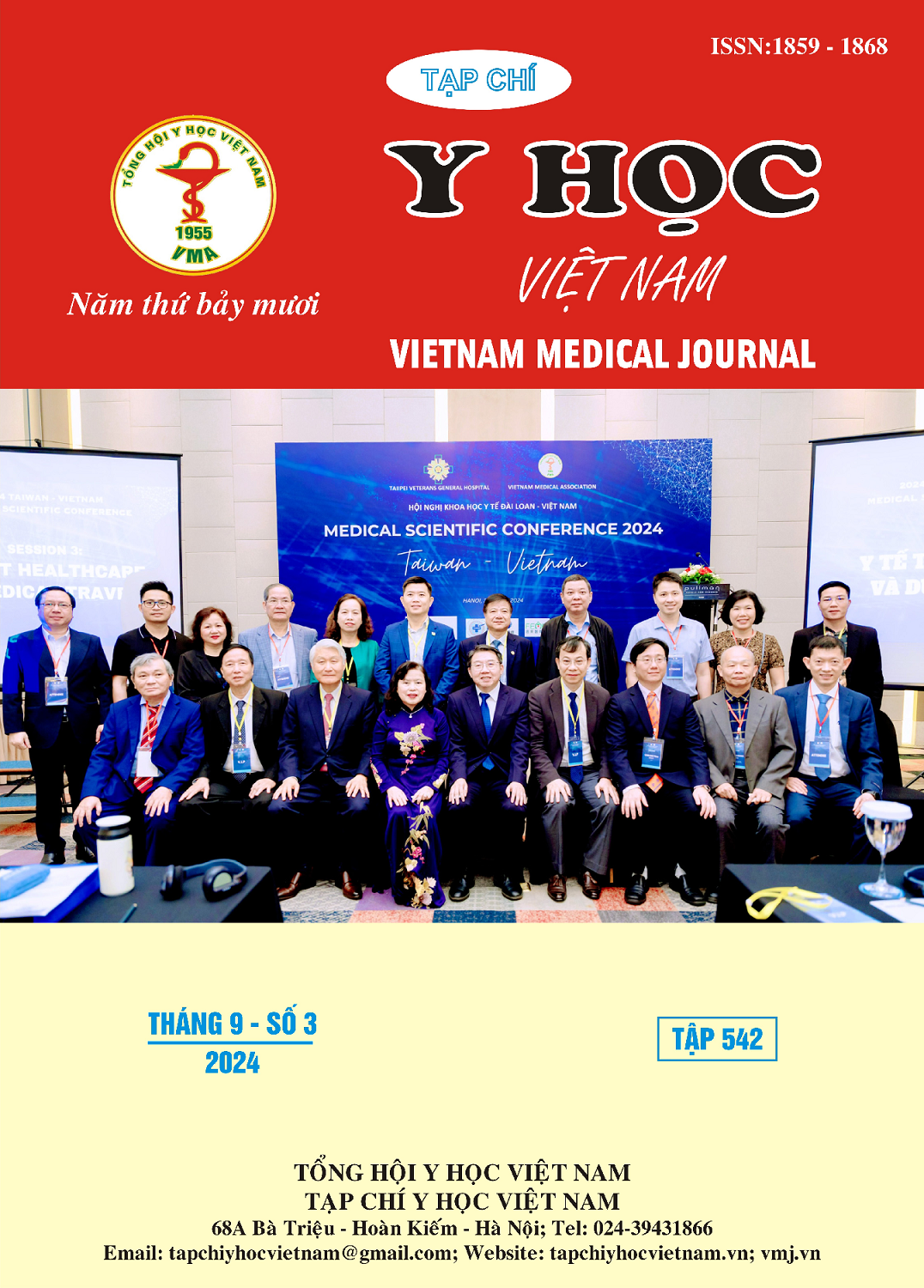KNOWLEDGE OF PATIENTS ON DIABETIC FOOT ULCERS – A SURVEY AT CHO RAY HOSPITAL FROM 2021 TO 2022
Main Article Content
Abstract
patients to actively prevent this complication. Educative activities for diabetic patients are not routinely conducted in Vietnam. Hence, we carried out this study to evaluate the knowledge of patients at Cho Ray Hospital on mechanical causes of diabetic foot ulcers and the formation and progression of diabetic foot ulcers. Method: A cross-sectional study included 374 diabetic patients coming to Cho Ray Hospital for outpatient check-ups or hospitalization from 2021 to 2022. The data-collecting tool was a pre-designed questionnaire in which seven diabetic foot ulcer-related questions were borrowed from the Patient Interpretation of Neuropathy (PIN) questionnaire (Physical Causes of Ulcers subscale and Acute Foot Ulcer Onset subscale) by Vileikyte et al. Results: The average score for the knowledge of the studied population was 26,4 ± 4,45 (out of 35). The proportions of patients who had a wrong answer for these following questions were still high: 56,1% still thought that diabetic foot ulcers only happened after a long time of diabetes. 44,6% and 42,0% did not know that calluses and dried food skin could cause diabetic foot ulcers. There were possible significant associations between gender, level of education, and the knowledge of patients. Conclusions: Patients' knowledge of diabetic foot ulcers still needs to be improved. Gender and level of education can be associated with patients’ levels of this knowledge.
Article Details
Keywords
foot ulcers, diabetes, knowledge
References
2. Duc Son, L.N.T., Kusama, K., Hung, N.T.K., Loan, T.T.H., Chuyen, N.V., Kunii, D., Sakai, T., Yamamoto, S.,. Prevalence and risk factors for diabetes in Ho Chi Minh City, Vietnam. Diabet Med (2004) 21, 371–376.
3. George, H., Rakesh, P., Krishna, M., Alex, R., Abraham, V.J., George, K., Prasad, J.H.. Foot Care Knowledge and Practices and the Prevalence of Peripheral Neuropathy Among People with Diabetes Attending a Secondary Care Rural Hospital in Southern India. J Family Med Prim Care (2013) 2, 27–32.
4. Gopalan, A., Mishra, P., Alexeeff, S.E., Blatchins, M.A., Kim, E., Man, A.H., Grant, R.W.,. Prevalence and predictors of delayed clinical diagnosis of Type 2 diabetes: a longitudinal cohort study. Diabet Med (2018) 35, 1655–1662.
5. Guidelines on the prevention of foot ulcers in persons with diabetes (IWGDF 2019 update) - Bus - 2020 - Diabetes/Metabolism Research and Reviews - Wiley Online Library [WWW Document], n.d. URL https://onlinelibrary.wiley.com/doi/full/10.1002/dmrr.3269 (accessed 12.20.20).
6. Magliano, D.J., Boyko, E.J., IDF Diabetes Atlas 10th edition scientific committee. IDF DIABETES ATLAS, 10th ed, IDF Diabetes Atlas 2021. International Diabetes Federation, Brussels.
7. Reiber, G.E., Vileikyte, L., Boyko, E.J., del Aguila, M., Smith, D.G., Lavery, L.A., Boulton, A.J.,. Causal pathways for incident lower-extremity ulcers in patients with diabetes from two settings. Diabetes Care (1999) 22, 157–162.
8. Vileikyte, L., Gonzalez, J.S., Leventhal, H., Peyrot, M.F., Rubin, R.R., Garrow, A., Ulbrecht, J.S., Cavanagh, P.R., Boulton, A.J.M.,. Patient Interpretation of Neuropathy (PIN) questionnaire: an instrument for assessment of cognitive and emotional factors associated with foot self-care. Diabetes Care (2006) 29, 2617–2624.


